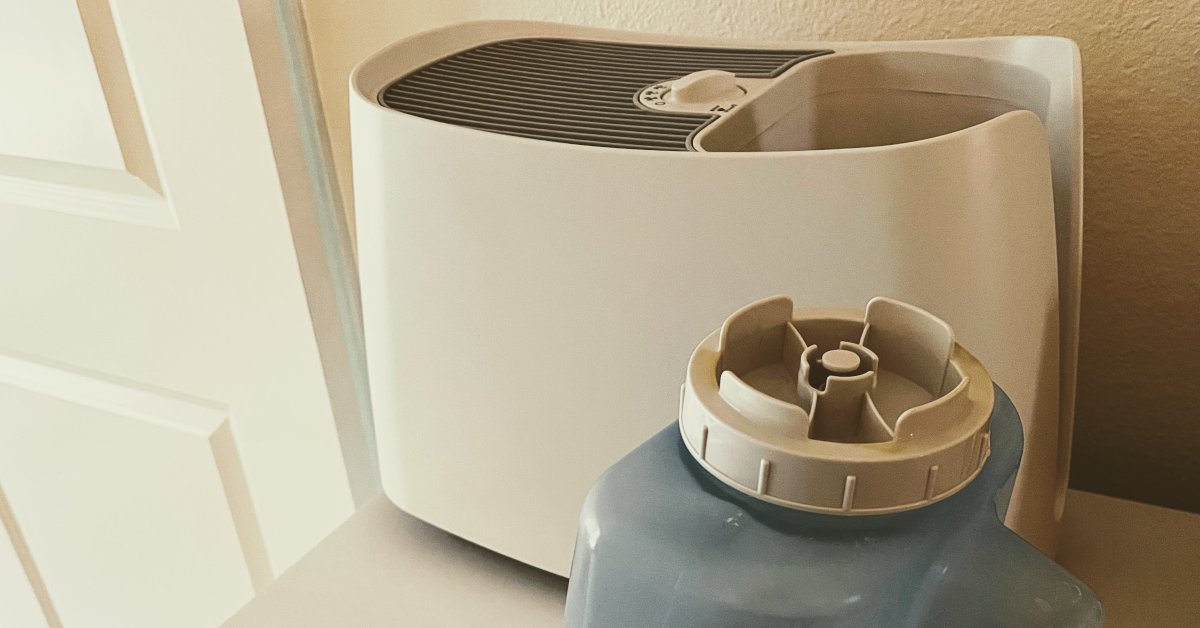
How to Find a Humidifier that Actually Works
Unfortunately, it’s really hard to find good advice about humidifiers on the internet. A quick google search for something like “humidifier advice” seems to find mostly SEO spam – things like “5 Tips When Buying a Humidifier” that contain useless tips and affiliate links to generate ad revenue. On top of that, it’s pretty easy to find complaints about problems with various humidifiers (e.g. in reviews), but hard to find solutions. Humidifiers produce dust, they’re impossible to clean, they grow mold, or they don’t actually improve humidity. Even some of the most frequently recommended humidifiers, like the Honeywell HCM-350, are despised by some consumers.
I live in Colorado, a state known for its dry air at 5,280 ft elevation. And I like to use a humidifier at night to keep my nose and throat from getting dry when I sleep. Over the course of the past two or three years, I’ve done a decent amount of research (including this YouTube video) and I’ve tried a few different humidifiers. I think I finally have a sense of what works, and I’m hoping to make this information easier to find by sharing it here! If you want to use a humidifier but don’t know where to start, or if you’ve been disappointed with problems from a humidifier you’ve tried, maybe I can help you find something that works!
Humidifiers that Don’t Really Work
There are a few different types of humidifiers, and each type uses a different mechanism to produce humidity. While there could be some special circumstances that warrant a certain type of humidifier, I think some types are almost always bad for normal users at home. You should be aware of these, and understand what makes them bad, so you can avoid them.
Ultrasonic Humidifiers
Somewhat confusingly, ultrasonic humidifiers are sometimes also referred to as “cool mist” humidifiers, but they’re not to be confused with the wicking kind. (More on that below.) Ultrasonic humidifiers essentially work by vibrating the water at a high frequency. This shoots tiny droplets of water into the air, which then evaporate and make the air more humid. These humidifiers are advertised as cool mist humidifiers that don’t need a filter and are quieter than a fan. And while that’s true, they have a major downside. Because of the way they shoot droplets of water into the air, they also shoot everything that’s in the water into the air – including tiny particles of dirt and dissolved minerals. That means ultrasonic humidifiers produce a substance infamously known as “white dust” when you use them with tap water. The minerals dissolved in the water fall back to the floor as dust when the tiny droplets of water evaporate. This kind of humidifier will coat a whole room with a visible layer of fine dust particles after only a day or two (assuming you fill it with tap water). Interestingly, the problem goes away if you use distilled water, but that’s infeasible for most people since you can’t easily/cheaply distill that much water yourself, and you don’t want to purchase multiple gallons of distilled water at the store every week. In short, don’t buy an ultrasonic humidifier.
Warm Mist Humidifiers
Warm mist humidifiers are another type of humidifier. They operate, more or less, by slowly boiling water. This produces steam (“warm mist”) that adds humidity to the room. There are various methods to heat the water and make the steam, but any warm mist humidifier does ultimately produce steam from heat. Because the humidity comes from steam, there’s no white dust to worry about. (The minerals dissolved in the water are left behind in the tank when the water evaporates as steam.) But warm mist humidifiers also have some downsides. They are the least energy efficient type of humidifier (because they basically boil water) and they also tend to be loud (because boiling water isn’t that quiet). This type of humidifier can sometimes be pretty cheap – for example, the Vicks Warm Steam Vaporizer. But that humidifier (vaporizer) uses electrolysis to produce steam, and after extended use minerals will build up inside the humidifier and it won’t work as well. If you want a humidifier that works well for daily use, a warm mist humidifier probably isn’t the best choice.
Humidifiers that Actually Do Work Well

The only kind of humidifier that’s well-suited for regular home use to humidify a room (at least in my opinion) is an evaporative humidifier with a wick (sometimes called an evaporative cool mist humidifier). This kind of humidifier uses a wick (sometimes called a filter) that sits in water and absorbs it. A fan blows air against the wick, and the air becomes more humid as moisture from the wick evaporates into the air. That’s it. It’s not complicated, and it shouldn’t be expensive. Some examples of humidifiers in this category are the Honeywell HCM-350, Vicks VEV400, and Aircare Companion.
Many people try an evaporative humidifier and end up hating it because it develops an odor or grows mold quickly. Indeed, I experienced this myself for several months. Of course, replacing the filter solves the problem, but I often found myself replacing the filter every week or two, and scrubbing my hands raw while trying to get the humidifier thoroughly clean so it didn’t smell for the next week.
As it turns out, most of that is unnecessary – there’s a simple solution that can prevent odor and mold, and will allow you to use the same filter for months, with normal tap water. The key is to treat your water with a bacteriostatic treatment, often called simply “bacteriostat”. I use BestAir Bacteriostatic, available cheaply at many local stores including Walmart. You can use any brand you want – Aircare makes their own similar Bacteriostat. In any case, adding a few drops of this to the tap water in your evaporative humidifier prevents mold and bacteria from growing. Problem solved! No mold, no smell! You’ll still want to clean the humidifier from time to time, and you’ll still need to change the filter every month or two, but with an evaproative humidifier and bacteriostat it actually is possible to use a humidifier daily but only replace the filter every couple months. It makes your humidifier work like you would have expected it to in the first place.
So, if you want to buy an evaporative humidifier, what do I recommend? Honestly, anything that’s on sale at your local store will probably work great as long as it uses a wick. And the cheapest bacteriostat treatment you can find will probably get the job done. I have a Honeywell HCM-350 and a Vicks VEV400, and they both work well. It is difficult to clean the fan on my Honeywell, but it doesn’t smell because I use bacteriostat, and I do a deep cleaning once or twice a year. Still, if you’re comparing models, the most important thing I’d look for is a simple design that’s easy to clean. And while I’ve never personally tried them, some Aircare models are frequently recommended and seem like they’d perform well.
I wasn’t compensated in any way for writing this article, and none of the links above are affiliate links. I just enjoy writing and sharing information on my blog, and I hope I can save someone some trouble by sharing what I’ve learned.
About the Author

👋 Hi, I'm Mike! I'm a husband, I'm a father, and I'm a staff software engineer at Strava. I use Ubuntu Linux daily at work and at home. And I enjoy writing about Linux, open source, programming, 3D printing, tech, and other random topics. I'd love to have you follow me on X or LinkedIn to show your support and see when I write new content!
I run this blog in my spare time. There's no need to pay to access any of the content on this site, but if you find my content useful and would like to show your support, buying me a coffee is a small gesture to let me know what you like and encourage me to write more great content!
You can also support me by visiting LinuxLaptopPrices.com, a website I run as a side project.
Related Posts
- My Home Office Setup 10 Apr 2020
- How to Test and Optimize Your Home Wifi Coverage 28 Jul 2023
- How to Use Garmin's Workouts Feature on your GPS Running Watch 13 Jun 2020